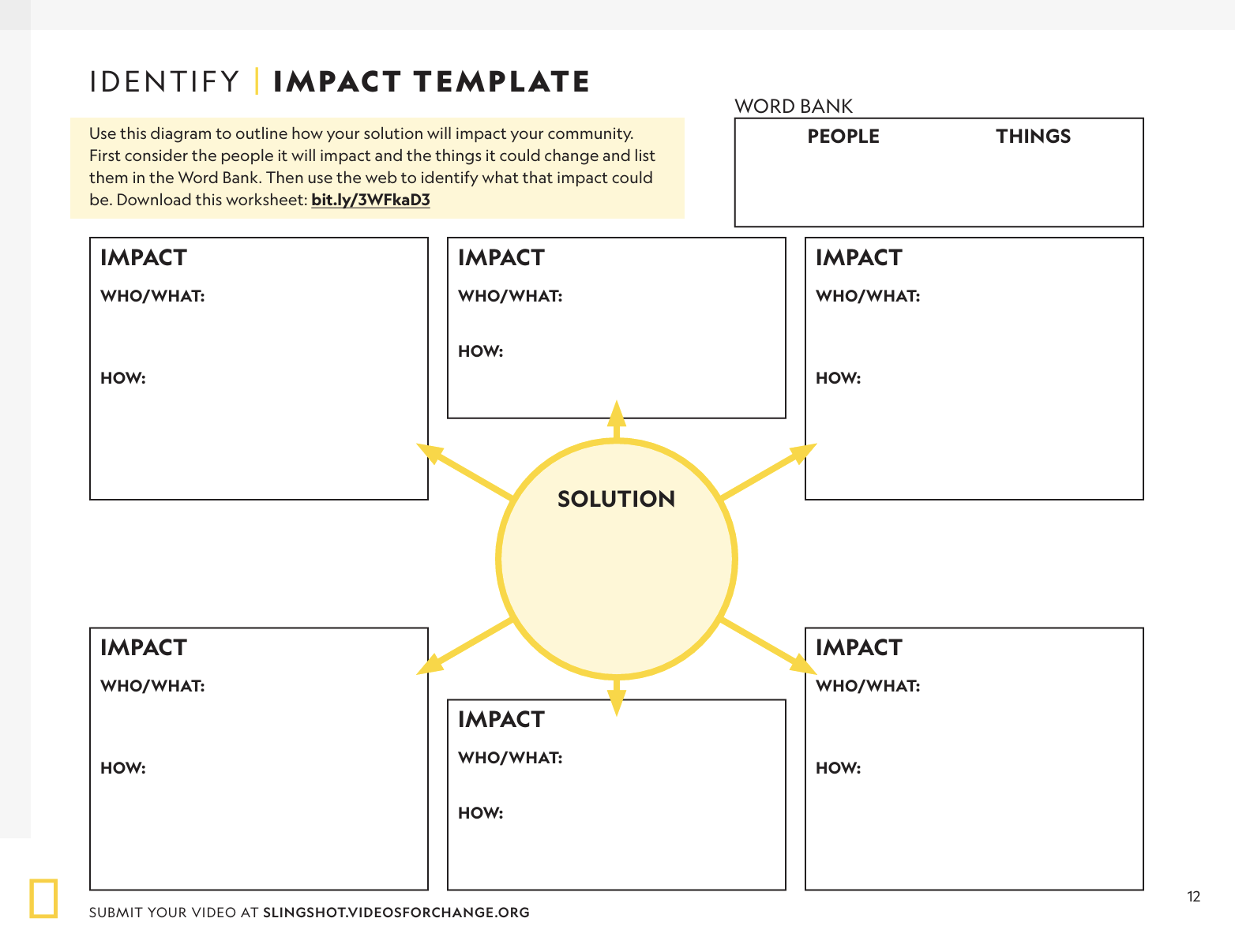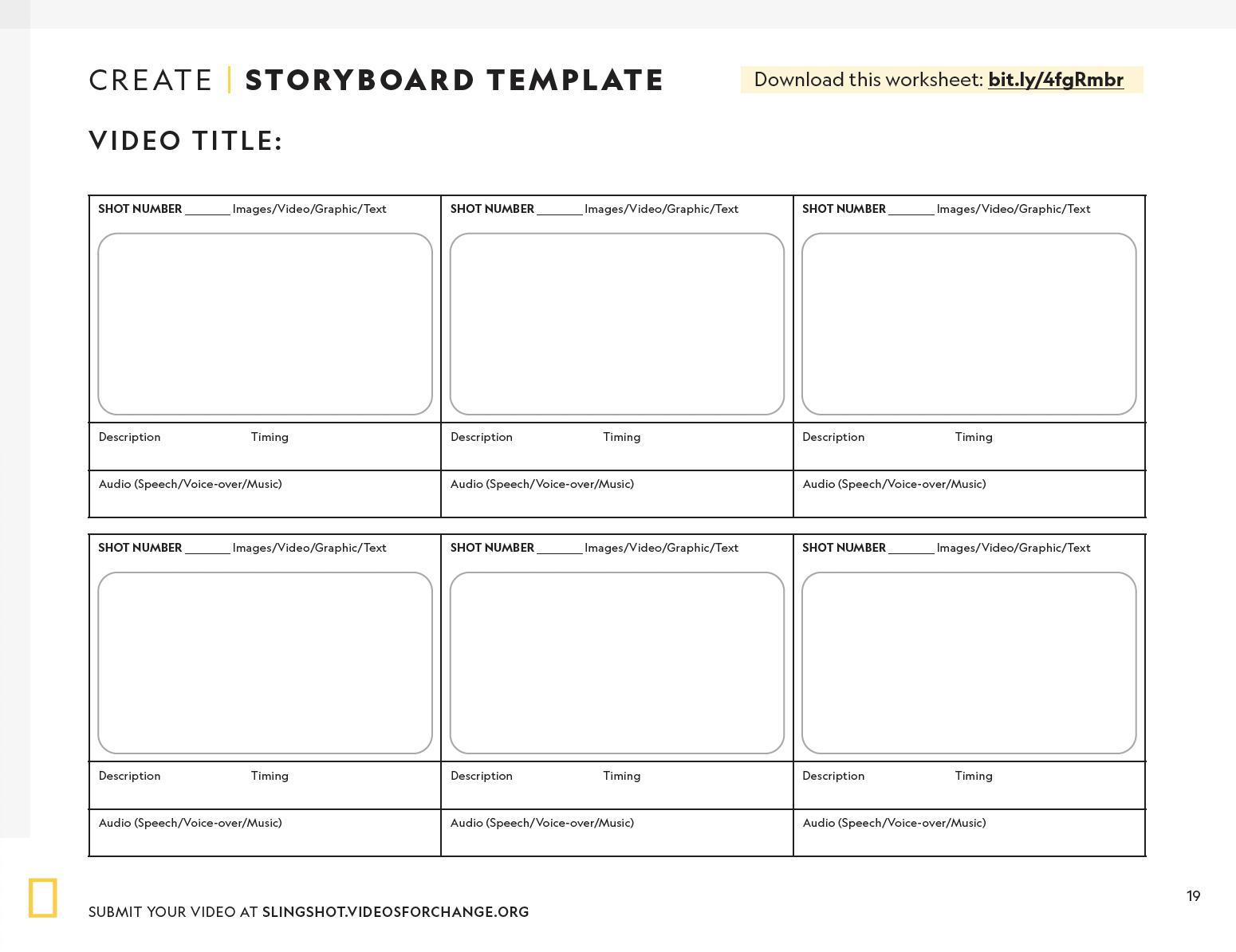The National Geographic Society, with support from Allen Family Philanthropies, is launching the 2026 Slingshot Challenge, which provides a platform for youth to voice ideas about the future of conservation work. If you are between the ages of 13 to 18 years old and are passionate about saving our planet, or are an educator looking for ways to engage students with impactful storytelling and environmental action, this challenge is designed for you.
Why share the Slingshot Challenge with your students?
The challenge invites students to take learning beyond the classroom and apply their knowledge to real-world problems. It encourages creativity, problem-solving, and collaboration—skills that will benefit students in school and beyond. Participating can also help students build confidence as they see their ideas take shape and reach a wider audience.
Participants are asked to create a one-minute video outlining a solution to an environmental issue that they’re passionate about. Their solution must focus on one or more of the challenge’s five topic areas:
- Address Climate Change
- Reduce Waste
- Protect Nature
- Clean the Air
- Restore the Ocean
1. Introduce the Challenge and Build Context
Activity: Begin with a discussion or multimedia presentation on current environmental challenges—such as climate change, biodiversity loss, or plastic pollution. Use National Geographic videos, articles, and images to engage students and spark curiosity.
Strategy: Relate the topic to students’ own lives and communities. Discuss local environmental concerns and explore how they connect to global issues.
2. Integrate with Classroom Learning
Activity: Look for connections between the Slingshot Challenge and topics you already teach.
For example:
• In Science, connect the project to units on climate systems, sustainability, or local ecosystems.
• In English Language Arts, focus on persuasive writing, script development, or storytelling.
• In Social Studies, explore how different communities and cultures respond to environmental challenges.
• In Mathematics, analyze real data, calculate impact, or create visual representations of findings.
Strategy: Identify how the challenge can enhance your current instruction. Use it as a springboard for lessons that encourage students to apply their subject knowledge in new and meaningful ways—such as analyzing scientific data, writing persuasive content, exploring cultural perspectives, or solving real-world math problems.
3. Spark Ideas Through Exploration
Activity: Host brainstorming sessions with prompts such as:
• “What environmental problem do you notice most in your community?”
• “What changes—big or small—could help solve it?”
Strategy: Invite guest speakers, organize virtual field trips, or explore local case studies to inspire creative thinking and broaden perspectives.
An example reflection activity from the Slingshot Challenge Participant Toolkit can be used here to help students think critically about their ideas and potential outcomes.
Tool: IMPACT DIAGRAM TEMPLATE
An example reflection activity from the Slingshot Challenge Participant Toolkit can be used here to help students think critically about their ideas and potential outcomes. Provide this word bank diagram to your students.
Guide them to outline how their solution will impact the community. First, ask them to consider the people it will affect and the changes it could bring—list these in the word bank. Then, use the web template to map out what that impact could be.

4. Guide the Project Process
Activity: Support students as they move through each stage:
- Identify a specific environmental issue.
- Research possible solutions.
- Design an approach or prototype.
- Plan how to communicate the solution in an organized manner.
Strategy: Break the work into steps. Start with researching, idea development, and utilizing the Slingshot Challenge project templates—to keep students on track and organized throughout the entire project.
5. Focus on Skill Building
Encourage growth in key areas:
• Creativity: Explore innovative or unconventional ideas.
• Communication: Practice delivering messages clearly in video or live presentations.
• Critical Thinking: Use data and evidence to support ideas.
6. Spark Ideas Through Exploration
Activity: Introduce design and collaboration tools such as Canva, or Google Workspace to help students organize ideas and bring projects to life.
Strategy: Incorporate these tools into class activities so students are comfortable using them when creating their final submission.
Tool: STORYBOARD TEMPLATE
An example storyboard activity from the Slingshot Challenge Participant Toolkit can be used here to help students visualize scenes and organize their ideas.

7. Celebrate and Share Student Work
Activity: Organize a “Slingshot Showcase” at your school where students present their videos to peers, teachers, and community members.
Strategy: Create an authentic event that mirrors the real challenge experience to boost student collaboration and confidence.
8. Reflect on the Experience
Activity: Encourage students to reflect individually or as a group through journals, discussions, or digital portfolios.
Strategy: Use rubrics that assess not only the final video but also the learning process, effort, and skill development demonstrated along the way.
Ready to get started?
Submissions are due by February 6, 2026! Visit the Slingshot Challenge Resources Page for educator and participant toolkits and a quick start guide. You can also sign up for Solution Design Labs, Educator Info Sessions, and Office Hours. To learn more about the National Geographic Slingshot Challenge, please visit www.SlingshotChallenge.org.
